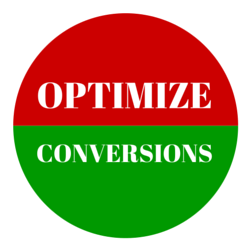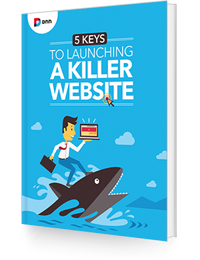
If you’re getting ready to redesign your website to make it more effective in presenting your brand and generating sales leads or orders, the job is bigger in scope than you may think.
You’ll probably focus heavily on design (but not always in the right way, as we will discuss) and neglect other aspects of the job that are equally, if not more, important. Here is a quick rundown of website redesign elements that you may overlook and how to do them correctly.

1) Responsive Design
Responsive web design is a set of techniques that make a website display optimally on desktop monitors, tablets and smartphones. With mobile Internet access skyrocketing, no business can afford to give mobile users a poor website experience. The responsive web design process can be complex and is quite different from traditional website construction.
2) Compelling Website Content
The inability to create useful, authoritative and persuasive content bottlenecks many Web design projects and undermines the effectiveness of the website. Poor content equals poor conversion rates. If you do not have skilled copywriters on staff, consider outsourcing to an agency or firm that has copywriters and editors. They can take your factual inputs and transform them into compelling website copy.
3) User Experience
User experience (UX) is a set of techniques Web designers employ to make a website easy for visitors to use. UX touches on design, copywriting and front-end development in particular -- informing, if not driving page layouts, typography, color palettes and navigational schemes. If users can find what they want quickly, and easily
see value in your company’s brand, products and services, then your UX execution has been a success.

4) Conversion Rate Optimization
Closely related to UX is conversion rate optimization (CRO) and is also crucial for a website built for lead generation and/or e-commerce. CRO techniques are used tactically in the creation and presentation of offers (e.g., requests for consultation, special discounts), and strategically in the design of “conversion funnels” that create paths for users to follow on the website that lead them to convert in a way that makes the most sense for them.
Many websites fail because of CRO shortcomings, such as placing fantastic offers in low visibility areas of a Web page, presenting overly complex offers, or displaying offers that appeal to only one type of user rather than one for “tire kickers” and one for prospects ready to do business.
5) SEO
Unless a website is built correctly for
Search Engine Optimization (SEO), future SEO marketing campaigns will be ineffective. And since most companies rely on SEO as the cornerstone of their Internet marketing strategy, they should make sure they really understand SEO.
If necessary, select and hire an SEO agency to assist you. An SEO agency
documents and explains in plain language specific SEO-related tasks it performs, including keyword research, sitemap creation, internal linking, SEO copywriting practices, Google Analytics integration and more.
6) Lead Tracking Setup
Lead generation and e-commerce websites must know where visitors and conversions came from; otherwise, the company will not have the data it needs to continuously improve its Internet marketing campaigns. Your new website should have the ability to track all phone and form leads back to their source, enabling you to know that this lead came from Google search and that lead came from a Bing ad, etc.

7) Web Design
I’ve seen clients get into trouble when they focus too heavily on design. The key to effective Web design is simplicity, not wild and crazy animation and complex design features. Simplicity of design enhances all aspects of website development. For instance, simple designs load faster, and
page-loading speed is vital for UX, CRO and SEO.
Google is not impressed by slow loading Web pages.
8) Programming Expertise
Once a website is designed and written, developers code the data, transforming it into what will become the live website. The specific programming expertise your website requires depends on the project.
For instance, an e-commerce website integrating with an internal ERP system is far more complex than a stand-alone lead generation website. Verify that your in-house team is experienced and trained in best practices for the applicable client-side, server-side and database skills. If you don’t have the expertise in-house, there are plenty of web development firms ready to assist.
9) Project Management Expertise
At this point it should be obvious that Web design projects involve a lot of moving parts. In order to keep projects on schedule and within budget, you must have a well-organized, documented process for managing workflow. A loosely managed project leads to miscommunication, errors, overlap and gaps in execution. In short, a mismanaged project is a high-stress project that ends with a substandard new website.

Related Reading (from DNN)
Websites play a significant role in building and strengthening brands.
Whether you’re re-launching a website or introducing a new one, it’s a powerful opportunity to position your company for success.
Because websites serve so many functions and have so many moving parts, it’s a serious undertaking to design, build and launch a site. If you want killer results, you need a solid plan.
This eBook provides you with
5 Keys to Launching a Killer Website.